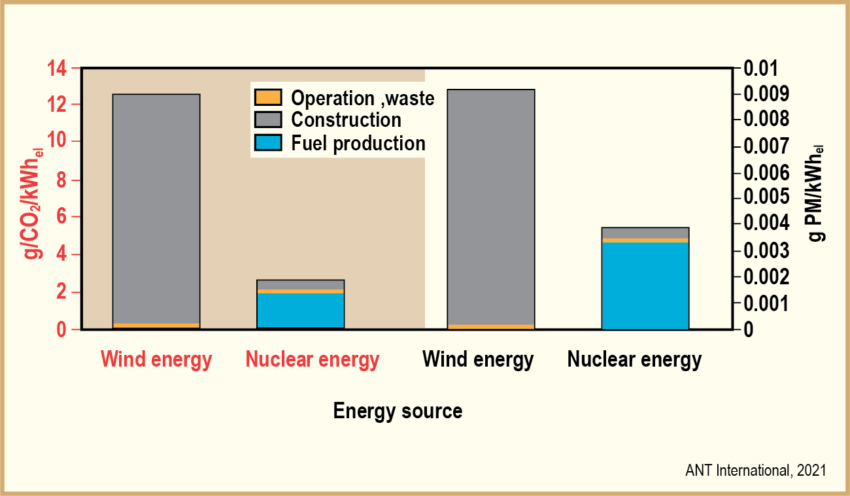Nuclear power has so many advantages compared to wind and solar energy. Nuclear power is compared to wind and solar:
- More reliable, i.e., it generates the power when it is needed
- Safer – Number of deaths from nuclear accidents (including Three Mile Island, Chernoble and Fukushima) is much lower
- Less expensive
- Has less negative impact on the environment- I will address this point in my post below.
About 10 times more material needs to be processed to produce the same amount of energy of wind compared compared to nuclear energy. This results in the following negative effects of wind energy:
- More severe environmental issues due to excessive mining
- Four times larger release of the poisonous gases, NOx och SO2, that also contribute to smog and acid rain
- Twice as large release of Particulate Matter (PM). Global deaths from all outdoor airborne particulate matter — including dust and smoke from wildfires and agricultural burns — is 4.2 million per year.
- Five times larger CO2 release
Environmental impacts from mining operations are significant and quite often severe, especially in developing nations which lack adequate management of the sector, Figure 1 and 2. The main environmental problems associated with mines are noise and dust, intrusion on the landscape, and the emission of pollutants into the air and surrounding watercourses, lakes and groundwater and land degradation. The mining industry is also a major consumer of energy. However, the most significant environmental aspect of mines is linked to the management of mining waste, which can create long-term problems.
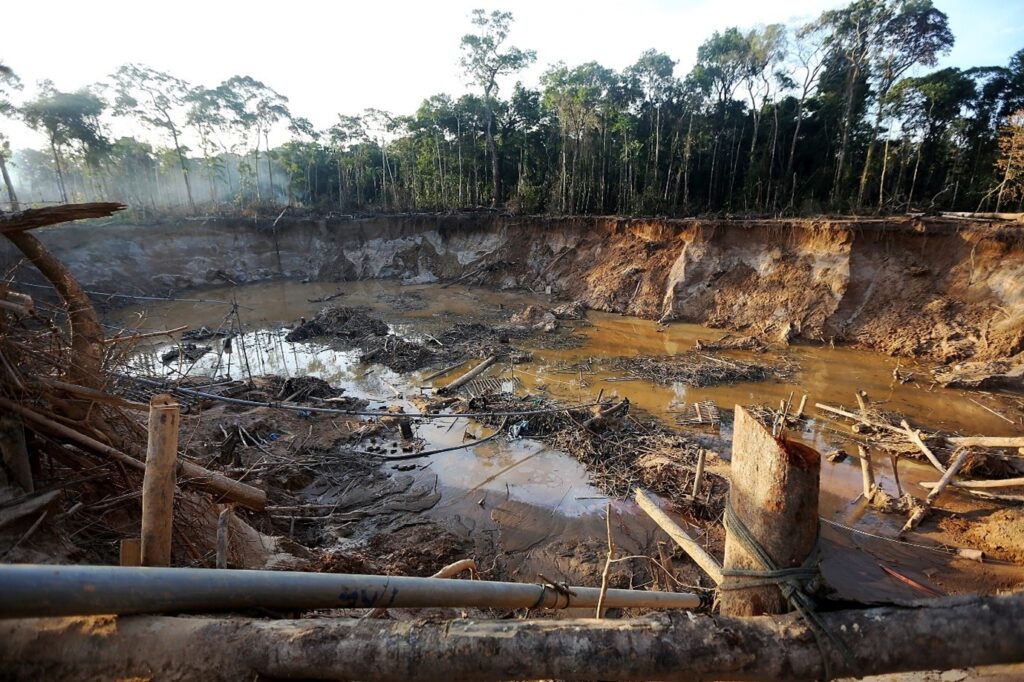
Figure 1- Example of mining in third world countries, Ref. 1
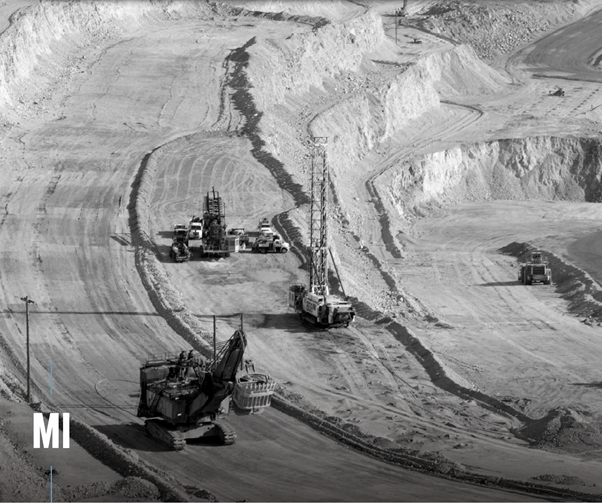
Figure 2 – Mining in an industrialised country, Ref. 2
Once the ore has been mined it needs to be transported, often very long distances to industries for furhter processing, production of the basic construction materials, manufacturing of the component itself (e.g. the tower) and finally transport to the construction site (e.g. wind farm). In this process, big machines are used, transports between various places on earth is done with ships all done with diesel engines. Figure 3 shows e.g. the manufacturing of nuclear fuel that is done in several steps at various locations, it is the same situation for construction materials, e.g. for a wind turbine.
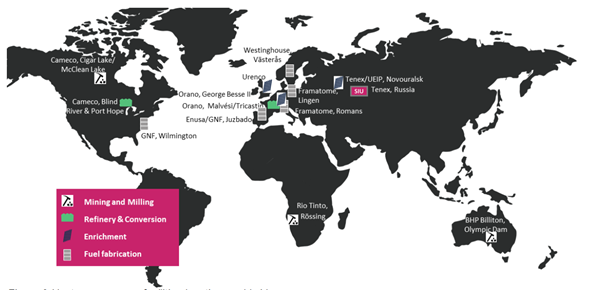
Figur 3 – Manufacturing of nuclear fuel is done in several steps at different places around the world. The same is true for wind turbines, Ref. 3
Figure 4 and 5 shows the manufacturing of steel and cement (for concrete). Concrete is sand and gravel, that is bonded together by cement and water.
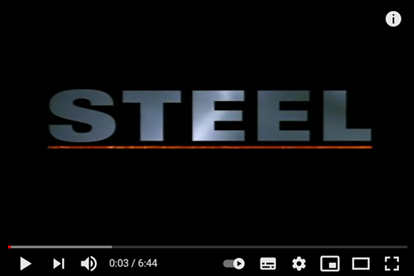
Figure 4 – Manufacturing of steel, (585) STEEL: From Start to Finish – YouTube (click on the link to see the film), Ref. 4
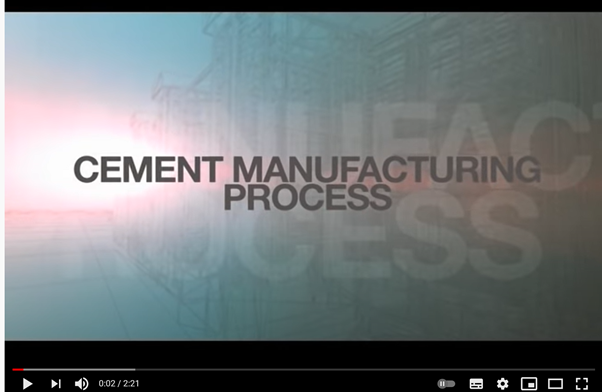
Figure 5 – Cement manufacturing. (click on the link to see the film). (585) Cement Manufacturing Process – YouTube (click on the link to see the film), Ref. 5
A 2 MW turbine/foundation (which is small compared to the turbines manufactured now) weighs about
1688 tons, Ref. 6, consisting of:
- 1300 tons concrete,
- 295 tons steel,
- 48 tons iron,
- 24 tons fiberglass,
- 4 tons copper,
- 0.4 tons neodymium,
- 0.065 tons dysprosium
Just to manufacture the materials listed above, about 600 tons of coal is needed, Ref. 7. In addition fossile fuel is also needed in the process to assemble the wind turbine at the final location, Figure 6.
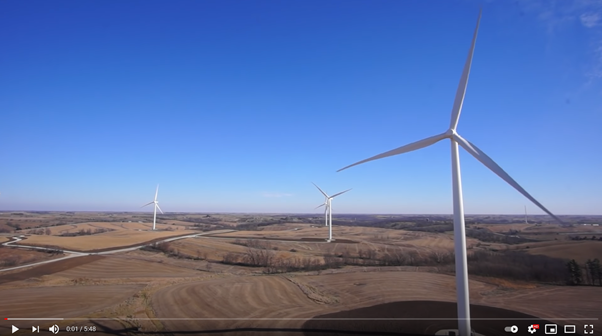
Figur 6 – Onsite assembly of the wind turbine, (585) MidAmerican Energy Company – From the Ground Up: Building our energy future, one turbine at a time – YouTube (click on the link to see the film), Ref. 8
Figur 7 shows that the mass of construction materials is about 10 times larger for wind turbines/foundation than that for nuclear power to generate the same amount of energy. The figure also shows that the bulk of the construction materials is steel and concrete.
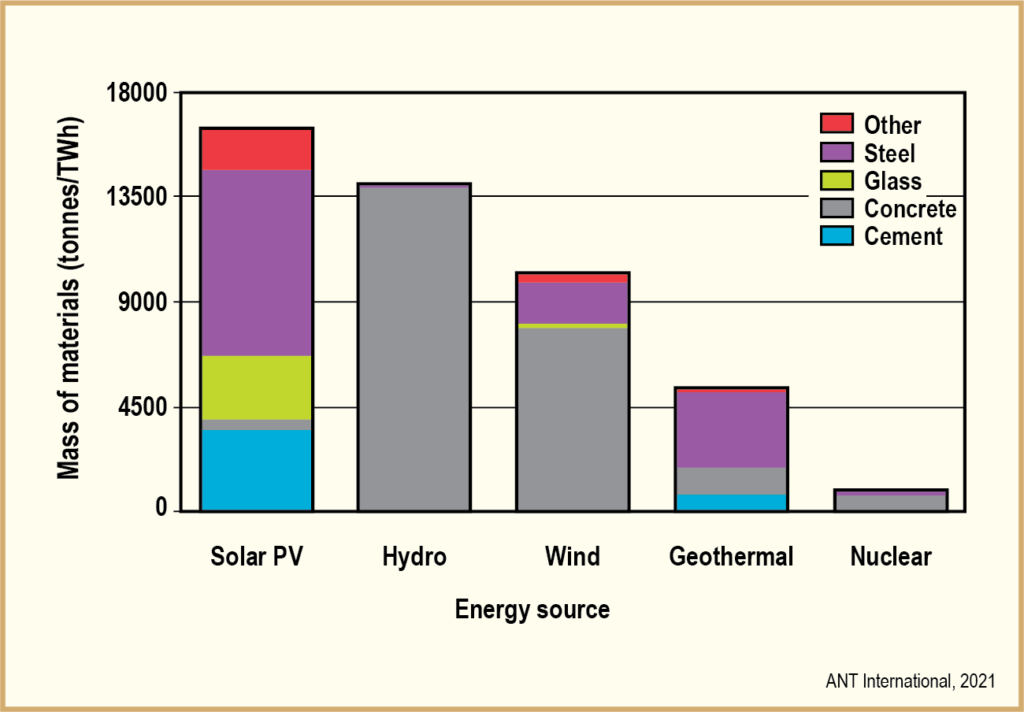
Figur 7. Mass of materials (tonnes/TWh) for various energy sources. The mass of spent nuclear fuel to produce 1 TWh is 0.002 tons, Ref.9
The larger volume of materials used for construction (including transport, see Figure 3) of wind turbine/foundation compared to that of nuclear power plant/nuclear fuel results in, Figure 8:
- Much larger negative environmental impact due to mining (see Figure 1 and 2) and
- 7 times more use of fossile fuel
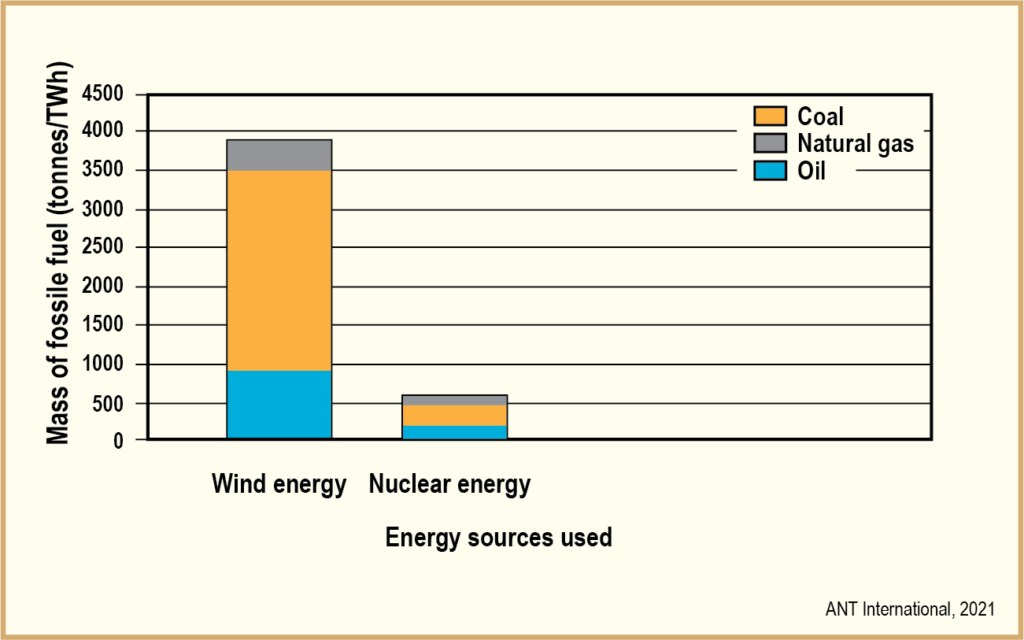
Figure 8. Mass of fossile fuel used for construction/transport of wind turbine/foundation and nuclear power plant/nuclear fuel to produce the same amount of energy. Ref 3 and Ref. 10
Vattenfall, one of the largest electricty producers in Europe, recently published new Life Cycle Analyses Figure 9. Vattenfall has about 2 800 wind turbines in various locations in Europe as well as 5 nuclear power plants in Sweden.
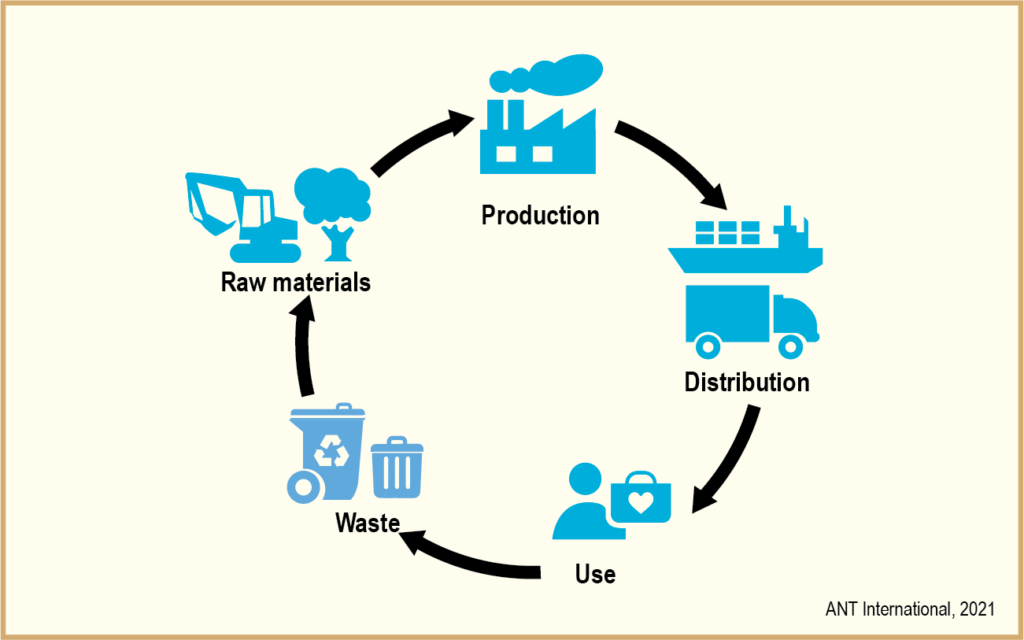
Figure 9 –Life cycle analysis (LCA) is a method used to evaluate the environmental impact of a product through its life cycle encompassing extraction and processing of the raw materials, manufacturing, distribution, use, recycling, and final disposal
Some of the results in the very comprehensive Vattenfall LCA analyses are presented in Figure 10 and 12 showing that nuclear energy is much cleaner than that of wind energy.
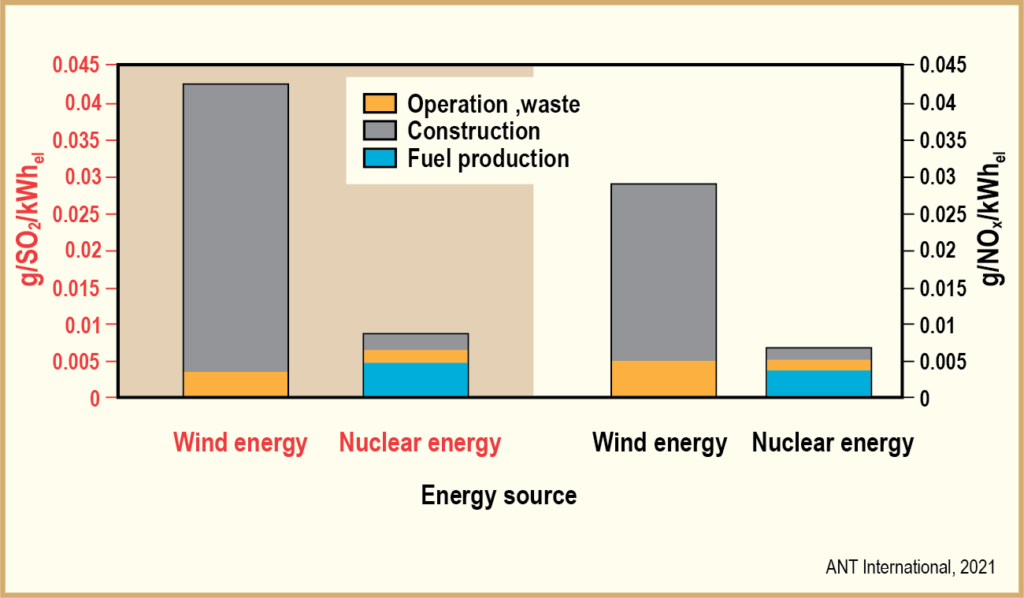
Figur 10 – Release of SO2 and NOX) per kWh from wind and nuclear energy. NOx and SO2 gases react to form smog and acid rain as well as being central to the formation of fine particles (PM) – Figure 13, which are associated with adverse environmental and health effects. Ref 3 and Ref. 10
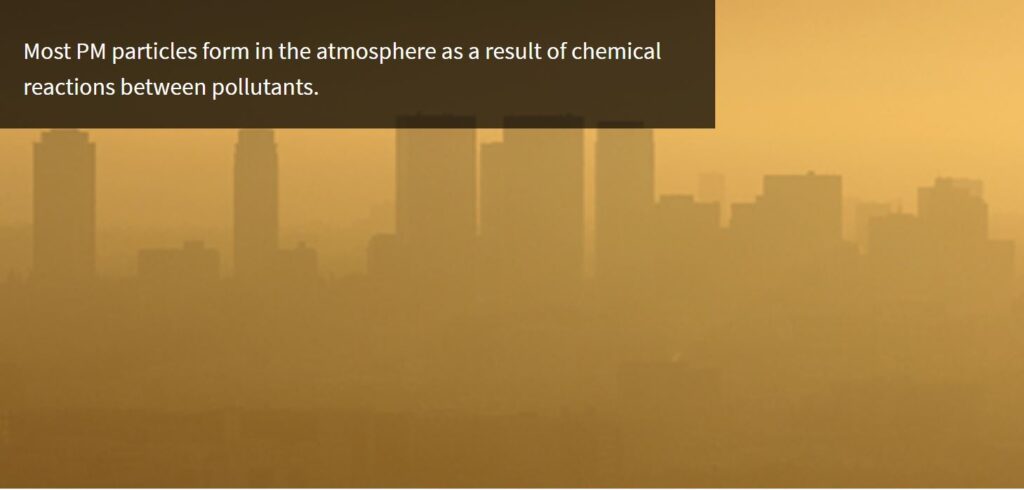
Figur 11 – Smog is air pollution that reduces visibility. The term “smog” was first used in the early 1900s to describe a mix of smoke and fog.
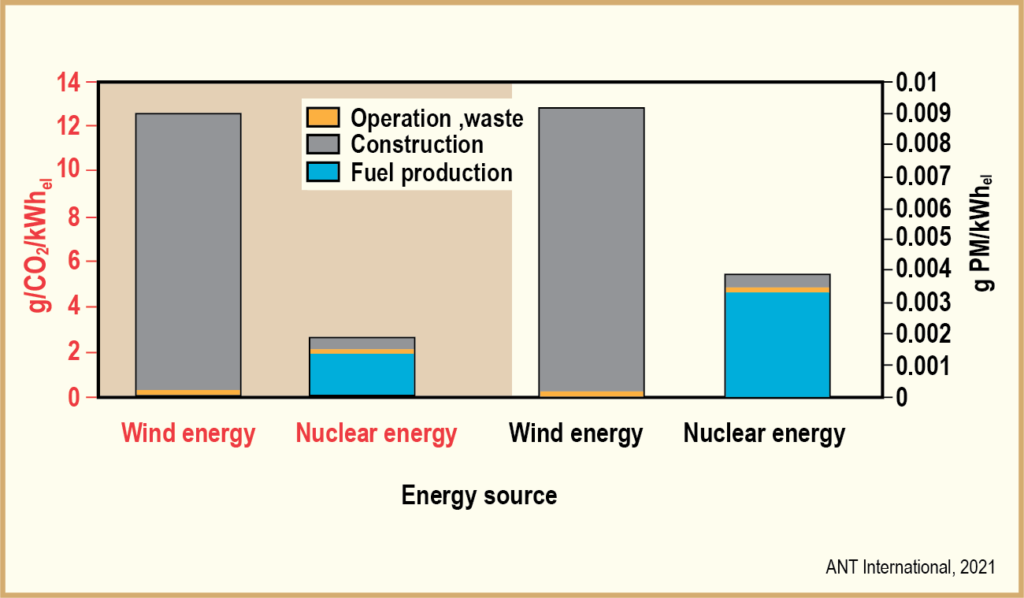
Figur 12 – Emission of CO2 and Particulate Matter PM which stands for particulate matter (also called particle pollution): the term for a mixture of solid particles and liquid droplets found in the air. Ref 3 and Ref. 10
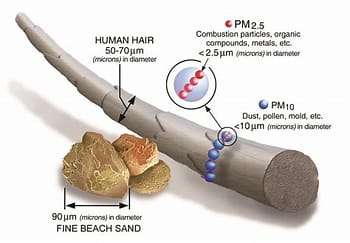
Figur 13 – Size comparisons for PM particles.
The burning of fossil fuels – especially coal, petrol, and diesel – is a major source of airborne fine particulate matter (PM2.5). Particulate matter (PM) refers to the sum of all solid and liquid particles suspended in air, of which many of them are hazardous. In addition to NOx, CO, SO2, biomass burning is a principal contributor of PM to the environment. The most recent Global Burden of Disease Study, Ref. 11, the largest and most comprehensive study on the causes of global mortality, put the total number of global deaths from all outdoor airborne particulate matter — including dust and smoke from wildfires and agricultural burns — at 4.2 million.
References:
- Ref. 1 – Effects of Gold Mining on the Environment (sciencing.com)
- Ref. 2 – Green Energy Reality Check: It’s Not as Clean as You Think | Manhattan Institute (manhattan-institute.org)
- Ref. 3 – Data (environdec.com)
- Ref. 4 – (585) STEEL: From Start to Finish – YouTube
- Ref. 5 – (585) Cement Manufacturing Process – YouTube
- Ref. 6 – 1688 Tons of material to build just 1 windmill | Peak Energy & Resources, Climate Change, and the Preservation of Knowledge (energyskeptic.com)
- Ref. 7 – How much coal goes into a wind turbine? | Debunk House (wordpress.com)
- Ref. 8 – (585) MidAmerican Energy Company – From the Ground Up: Building our energy future, one turbine at a time – YouTube
- Ref. 9 – Modified figure according to: DOE Quadrennial Technology Review, Table 10 by Murray, R.L. and Holbert, K.E., K.E. 2015. Nuclear energy: an intriduction to the concept, systems, and applications of nuclear processes (7th ed.), Elsevier.
- Ref. 10 – Data (environdec.com)
- Ref. 11 – Deaths from fossil fuel emissions higher than previously thought (harvard.edu)

